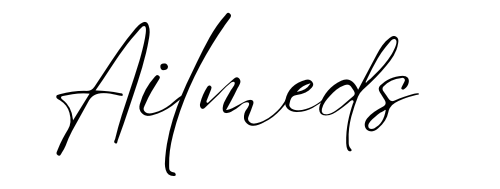Foot Pain

Foot pain can arise from a variety of causes, including plantar fasciitis, bunions, corns, calluses, or more generalized causes like overuse or poorly fitting shoes. Depending on the cause and nature of the pain, several over-the-counter (OTC) treatment options might provide relief:
1. Nonsteroidal Anti-inflammatory Drugs (NSAIDs): These can help reduce inflammation and pain.
Ibuprofen (e.g., Advil, Motrin IB)
Naproxen (e.g., Aleve)
2. Acetaminophen: This can help relieve pain but doesn’t have the anti-inflammatory properties of NSAIDs.
Acetaminophen (e.g., Tylenol)
3. Topical Analgesics: These are applied directly to the painful area of the foot.
Counterirritants (e.g., Icy Hot, Bengay): Contain ingredients like menthol or camphor to produce a warming or cooling sensation.
Topical NSAIDs (e.g., Voltaren Gel)
Capsaicin cream: Useful for nerve-related pain.
Lidocaine patches or creams: Provide a numbing effect.
4. Foot Supports and Insoles: Orthotic insoles: Can provide arch support and cushioning, which might help reduce pain from conditions like plantar fasciitis or flat feet.
Heel cups or pads: Can provide additional cushioning for heel pain.
Toe spacers or bunion pads: Useful for pain from bunions or overlapping toes.
5. Cold Packs: Applying cold packs can reduce inflammation and numb the area, especially after acute injuries or flare-ups.
6. Creams and Pads for Corns and Calluses: Salicylic acid: Available in various OTC products to soften and reduce corns and calluses. Examples include Dr. Scholl’s Corn Removers or Compound W.
7. Compression: Socks or sleeves designed for foot compression can help reduce swelling and provide support, especially for conditions like plantar fasciitis.
8. Foot Baths: Soaking the feet in warm water or Epsom salt baths can help relieve pain and relax foot muscles.
9. Stretching and Foot Exercises: Regular stretching and exercises can alleviate certain types of foot pain, especially those related to plantar fasciitis or Achilles tendinitis.
Lifestyle and Preventive Measures: Wearing shoes that fit well and provide proper support is crucial. This might include using athletic shoes for sports or avoiding high heels for prolonged periods. Regularly inspecting your feet for areas of rubbing, redness, or blisters can help you address potential problems before they become painful. Maintaining a healthy weight can reduce the strain on your feet.
Important Considerations: The appropriate treatment largely depends on the specific cause of foot pain. Always read and follow the directions on any OTC product, and be cautious about potential drug interactions or side effects.
If foot pain is severe, persistent, or if there are signs of a more severe issue (like infection, significant swelling, or inability to bear weight), seek medical attention.
Chronic foot pain or pain accompanied by other symptoms (like numbness or tingling) should also be evaluated by a healthcare provider.
Always consult with a healthcare professional for a proper diagnosis and recommendations tailored to your specific situation.
Additional Information:
Related Topic: Understanding Your Tarsal Tunnel Syndrome
Achilles Tendinitis
Achilles Tendinitis is a common condition causing pain along the back of the leg near the heel. It’s often a result of overuse, especially in athletes. The key symptom is a gradual buildup of pain that worsens with continued activity. To manage Achilles Tendinitis, resting the foot is crucial. Additionally, applying ice, using over-the-counter pain relievers, and doing gentle stretches can alleviate symptoms. For persistent cases, physical therapy is recommended. It’s important to wear shoes with proper support to prevent recurrence of Achilles Tendinitis.
Metatarsalgia
Metatarsalgia, characterized by pain in the ball of the foot, often affects individuals who engage in high-impact sports. This condition can also result from ill-fitting shoes or abnormal foot mechanics. To alleviate Metatarsalgia, rest and ice application are beneficial. Over-the-counter pain relievers and foot supports, like metatarsal pads, can also help. It’s essential to wear proper footwear and maintain a healthy weight to reduce pressure on the feet. If Metatarsalgia persists, consult a healthcare provider for further evaluation.
Morton’s Neuroma
Morton’s Neuroma is a painful condition that affects the ball of the foot, typically between the third and fourth toes. It feels like standing on a pebble in your shoe. The primary cause is irritation or compression of the nerves between the toes. Treatment for Morton’s Neuroma includes wearing wider shoes with a low heel and soft sole, using arch supports or foot pads, and taking over-the-counter pain relievers. In some cases, injections or surgery might be required for relief.
Gout
Gout is a type of arthritis that causes intense pain, redness, and swelling, often affecting the big toe. It results from elevated levels of uric acid in the blood, forming crystals in the joints. Managing Gout involves medication to reduce pain and inflammation. Lifestyle changes, such as a diet low in purines, hydration, and limiting alcohol, are essential. If you suspect Gout, consult a healthcare provider for a proper diagnosis and treatment plan.
Diabetic Neuropathy
Diabetic Neuropathy, a nerve damage complication from diabetes, often leads to numbness, tingling, or pain in the feet. Regular foot inspections are vital for those with Diabetic Neuropathy to prevent sores or infections. Good blood sugar control and a healthy lifestyle are essential in managing this condition. Special diabetic shoes and socks can also protect the feet. For pain relief, over-the-counter pain medications or prescribed medications might be necessary.
Peripheral Arterial Disease (PAD)
Peripheral Arterial Disease (PAD) affects circulation, leading to foot pain and cramps, especially when walking. The key to managing PAD is improving circulation through lifestyle changes like quitting smoking, exercising regularly, and maintaining a healthy diet. In some cases, medication or surgery might be required to improve blood flow. It’s crucial for individuals with PAD to pay close attention to foot care to prevent complications.
